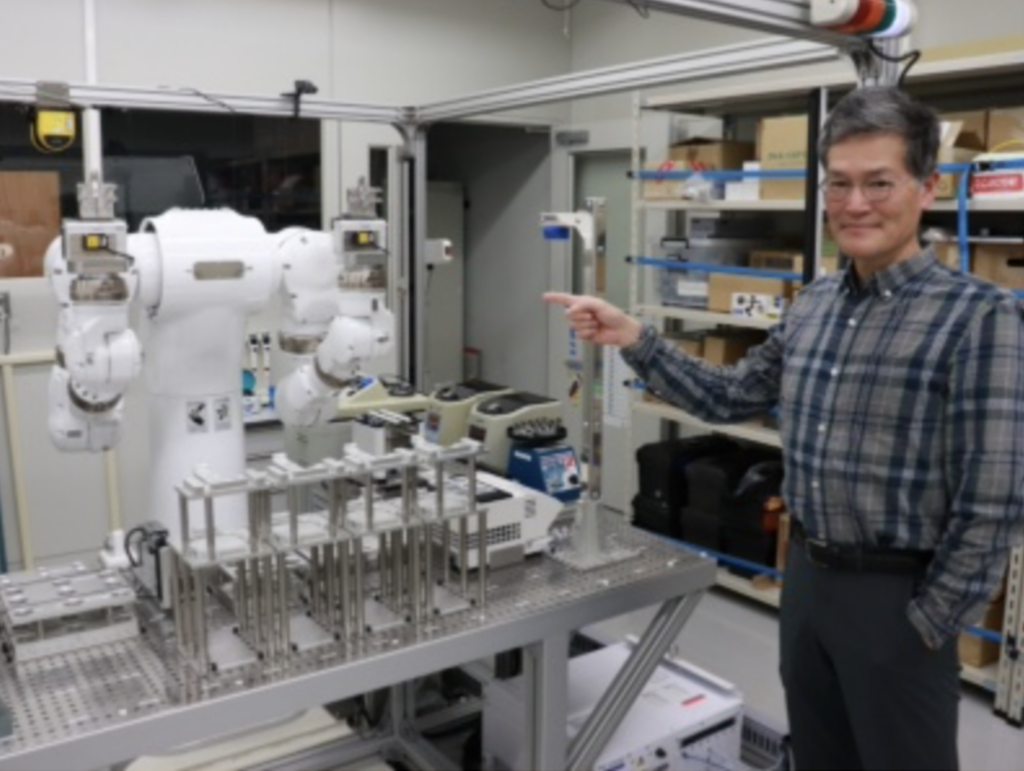https://bio.nikkeibp.co.jp/atcl/news/p1/23/06/29/10868/
The general-purpose humanoid robot “Mahoro” is one of the most well-known of all experimental automation devices. Mahoro has a long history of development and was first announced in its current form in 2012. Since then, it has been gradually introduced to companies and research institutes.
Mahoro excels at delicate work, and it can also perform cell culture steps automatically. As of June 2023, approximately 30 units of Mahoro had been installed in companies and research institutes through sales and leasing. Thus, at Kobe Eye Center Hospital, Mahoro is being used in the process of inducing differentiation of RPE cells from iPS cells in a clinical study to transplant RPE cells derived from heterologous iPS cells for retinal pigment epithelial (RPE) insufficiency. Masayo Takahashi, president of Vision Care (Kobe City), and her team programmed how the technicians handled the cells, programmed the operations and input them into Mahoro, and then optimized the program with artificial intelligence. As a result, they have completed a protocol that can produce RPE cells with high efficiency beyond the original manual process.
Astellas Pharma Inc. is using Mahoro in its proprietary automated drug discovery platform, Mahol-A-Ba. The company calls Mahoro a “master’s arm” because it can automatically perform cell culture at the same level as a skilled technician, and Mahol-A-Ba has a system in place that not only allows Mahoro to perform cell culture, but also combines it with cell culture and observation equipment to automatically observe cells that have undergone medium changes and passages.
In addition, Major is currently programmed for a new method of medium exchange for cells. When new medium is added in a very thin layer and slowly pushed down over the cell surface, a liquid flow called laminar flow is created. This method allows for continuous 100% medium exchange without mixing with the original medium. Using Major, this flow can be downsized to extremely thin culture medium (1 to 2 mm), rather than the usual 1 cm depth of a culture dish. In conventional culture methods, removing the petri dish from the CO2 incubator to change the medium and flowing the medium at high speed are stressful for the cells. In contrast, in Major culture, the liquid flow is very slow and smooth, causing less stress to the cells, and the liquid can be pushed through without mixing with old medium, making liquid exchange more efficient, he said. It best reproduces the environment of cells in vivo and in blood vessels and may dramatically increase culture efficiency.

